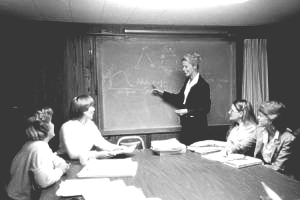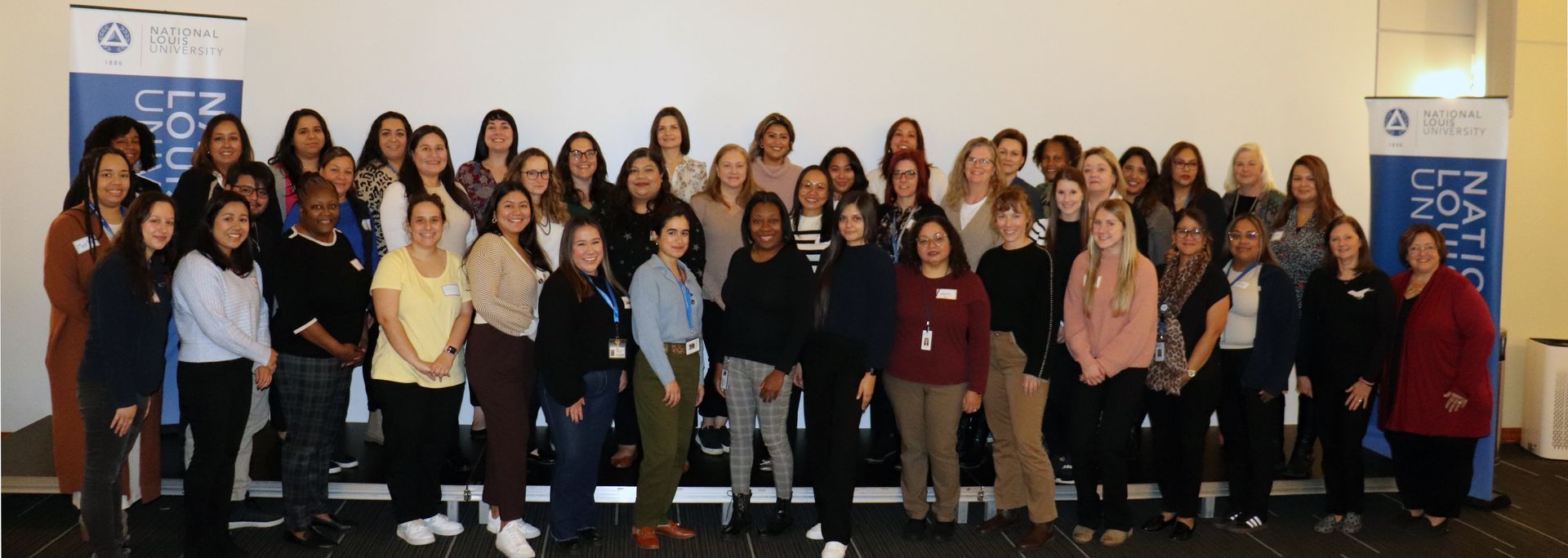BY Escrito Por Julieta Muñoz Y Sabrina Resendiz | October 30, 2025

Sim Loh is a family partnership coordinator at Children’s Village, a nationally-accredited Keystone 4 STARS early learning and school-age enrichment program in Philadelphia, Pennsylvania, serving about 350 children. She supports children and families, including non-English speaking families of immigrant status, by ensuring equitable access to education, health, employment, and legal information and resources on a day-to-day basis. She is a member of the Children First Racial Equity Early Childhood Education Provider Council, a community member representative of Philadelphia School District Multilingual Advisory Council, and a board member of Historic Philadelphia.
Sim explains, “I ensure families know their rights and educate them on ways to speak up for themselves and request for interpretation/translation services. I share families’ stories and experiences with legislators and decision-makers so that their needs are understood. Attending Leadership Connections will help me strengthen and grow my skills in all domains by interacting with and hearing from experienced leaders in different positions. With newly acquired skills, I seek to learn about the systems level while paying close attention to the accessibility and barriers of different systems and resources and their impacts on young children and their families.”

This document may be printed, photocopied, and disseminated freely with attribution. All content is the property of the McCormick Institute for Early Childhood.
Escrito por Julieta Muñoz y Sabrina Resendiz
Hoy en día, la tecnología es una herramienta esencial en todos los trabajos, incluso en educación infantil. Por eso, hemos diseñado un taller básico de Hojas de cálculo de Google (Google Sheets) para educadores, asistentes de salón de clase, coordinadores y directores de programas de la primera infancia que buscan mejorar su organización y el seguimiento y eficiencia administrativa. Este taller está dirigido a educadores, asistentes de aula, directores, personal administrativo y cualquier profesional en el área de la educación infantil que desea mejorar sus habilidades digitales.
Este curso virtual ofrece una introducción sencilla para quienes están empezando a usar hojas de cálculo. Durante el taller, los participantes aprenderán a:
- Navegar Google Sheets con confianza: aprenderán a usar la interfaz básica y a acceder a sus hojas de trabajo desde cualquier dispositivo con conexión a internet.
- Crear y organizar hojas de cálculo: aprenderán a crear documentos, nombrarlos adecuadamente y organizarlos en Google Drive.
- Ingresar y editar datos: cómo introducir información de manera ordenada y precisa, y cómo modificarla cuando sea necesario.
- Usar funciones básicas: como SUMA, PROMEDIO y CONTAR; ideales para organizar y dar seguimiento a información como asistencia, inventario de materiales, y desarrollo infantil.
- Aplicar formatos simples: para resaltar información importante, como cambiar colores, ajustar tamaños de texto y usar bordes para mejorar la visualización.
- Compartir y colaborar en tiempo real: cómo compartir hojas de cálculo con colegas o supervisores y trabajar en equipo de manera remota.
- Proteger la información sensible: conceptos básicos sobre cómo gestionar permisos de acceso y edición para mantener la información segura y confidencial.
Beneficios de participar en nuestro taller
Participar en esta formación y familiarizarse con las hojas de cálculo ofrece múltiples beneficios para los profesionales de la educación infantil:
- Mejor organización diaria: Mantener un registro de asistencia, listas de materiales, programación de actividades y seguimiento de niños será más rápido y eficiente.
- Ahorro de tiempo: Automatizar cálculos y organizar la información en un solo lugar reduce el tiempo dedicado a tareas administrativas.
- Facilidad de colaboración: La posibilidad de trabajar en tiempo real con colegas mejora la comunicación y el trabajo en equipo, especialmente en ambientes virtuales o híbridos.
- Fortalecimiento de habilidades digitales: Tener conocimientos básicos en Google Sheets es un paso importante para avanzar en otras herramientas tecnológicas educativas.
- Mayor autonomía y confianza profesional: Al desarrollar estas habilidades, los educadores pueden trabajar con más seguridad y fluidez en sus tareas digitales diarias.
Si desea fortalecer sus competencias digitales, acompáñenos a este entrenamiento completamente gratuito. No se necesita experiencia previa en hojas de cálculo.
El curso se ofrecerá en formato
virtual con ejercicios prácticos y acompañamiento personalizado. ¡No pierdas la oportunidad de mejorar tus habilidades digitales y transformar tu práctica educativa con herramientas simples y efectivas como Google Sheets!
Haga
clic aquí para registrarse para este curso que se llevará a cabo el miércoles, 12 de noviembre de 6:00 a 7:30 p.m CST. ¡Lo esperamos!
Julieta Muñoz, MS, es Gerente de integración de sistemas y tecnología en el McCormick Institute for Early Childhood de la Universidad National Louis. Julieta tiene una maestría en liderazgo organizacional de la Universidad National Louis. En su rol, supervisa y gestiona la integración, el mantenimiento y la optimización de nuestro sistema de Gestión de Aprendizaje, sistema de Gestión de Relaciones con el Cliente (CRM) y otras aplicaciones empresariales.
Sabrina Resendiz, es la coordinadora de aprendizaje electrónico en el McCormick Institute for Early Childhood de la Universidad National Louis. Sabrina tiene una licenciatura en estudios de aprendizaje y educación, especialmente en el desarrollo de adultos en el lugar de trabajo de la universidad de Illinois en Urbana-Champaign. En su rol, ayuda a administrar el sistema de gestión del aprendizaje, y proporciona asistencia a los participantes interesados o inscritos en los cursos en línea de McCormick.





